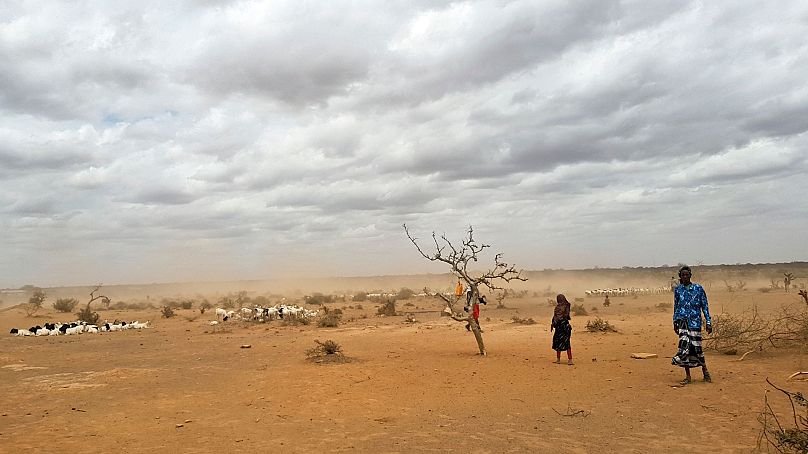Italy’s weather extremes mirror Ethiopia’s climate, research reveals.
Millions of people around the world have been experiencing a ‘climate hazard flip’ since the start of the century, new research reveals.
A ‘whiplash’ of extreme climate pressures is causing areas that once experienced frequent droughts to flood - and regions previously prone to flooding to face more droughts.
Despite steadily rising temperatures, climate change will not have a uniform effect on the planet, the WaterAid study warns.
“Instead, the hazard profile for any region is likely to change in unpredictable ways,” says co-lead researcher Professor Katerina Michaelides of the University of Bristol Cabot Institute for the Environment.
Europe is not immune from these erratic climate events. Data analysis shows that in northern Italy, the number of intense dry spells has more than doubled since 2000. But these are punctuated by risks of extreme flooding, as seen in Lombardy earlier this year.
Which countries are experiencing a ‘climate hazard flip’?
Locations in six countries were included in the study: Burkina Faso, Ethiopia, Ghana, Mozambique, Pakistan and Uganda, with Italy added for a European comparison.
Ethiopia’s southern Shabelle region mirrors the phenomenon seen in Italy. After facing periods of flooding between 1980 and 2000, it is now suffering a prolonged and severe drought. Then in April, a major flood hit the parched Shabelle River.
“Many of our study sites have experienced a hazard flip from being drought-prone to flood-prone or vice versa,” says the study’s co-lead researcher, Professor Michael Singer of the School of Earth and Environmental Sciences at Cardiff University.
Parts of Burkina Faso, northern Ghana, and Pakistan, meanwhile, have flipped from hot, dry conditions to wet, flood-prone climates. While Mozambique is “a chaotic mix of both extremes,” says Tim Wainwright, WaterAid’s chief executive.
But the researchers warn that their findings are not confined to these countries.
“We believe the hazard flip and, more generally, changes to flood and drought hazard frequency and magnitude are something most places on the planet will have to address,” says Singer.
How do climate hazard flips affect people?
Researchers studied the frequency and magnitude of flooding over the last 41 years in six countries where WaterAid works.
“We found that many locations are undergoing major shifts in the prevailing climate,” says Singer.
Although the results show that climate change doesn’t discriminate by region, extreme weather has the most devastating impact on communities that are ill-equipped to deal with it.
It can worsen poverty, displacement, disease, and even conflict as food and water resources grow scarce and livelihoods are wiped out.
Short yet heavy rains can lead to devastating flooding, while long rainy periods can destroy infrastructure and crops. Dry periods, meanwhile, provoke drought, crop failure and hunger. Even if a drought is punctuated by a flood, ground hardened by long dry periods is incapable of absorbing water.
A recent study showed that both the frequency and intensity of rainfall and droughts are increasing due to burning fossil fuels and other human activities that release greenhouse gases.
How can communities mitigate the impact of climate hazard flips?
In flood-stricken places like southeast Pakistan, villagers whose homes have been destroyed are moving to higher ground.
In the eastern Ugandan region of Mbale, hedges are being planted around crops to reduce soil erosion from heavy rains, while latrines have been moved away from potential flood zones. Bamboo forests planted on the slopes of the nearby Mount Elgon volcano aim to prevent landslides.
At the root of these problems is the mounting climate crisis, which countries have the chance to address at COP28 later this month.
WaterAid is calling on high income countries to give financial support for climate adaptation and water security in the worst affected regions.
“COP28 is only two weeks away and it cannot be another summit where the climate adaptation can is kicked down the road,” says Wainwright. “Our leaders must recognise the urgency and prioritise investment into robust and resilient water systems now.
“For the world’s most vulnerable, this is a matter of life or death. We cannot let climate change wash away peoples’ futures.”












